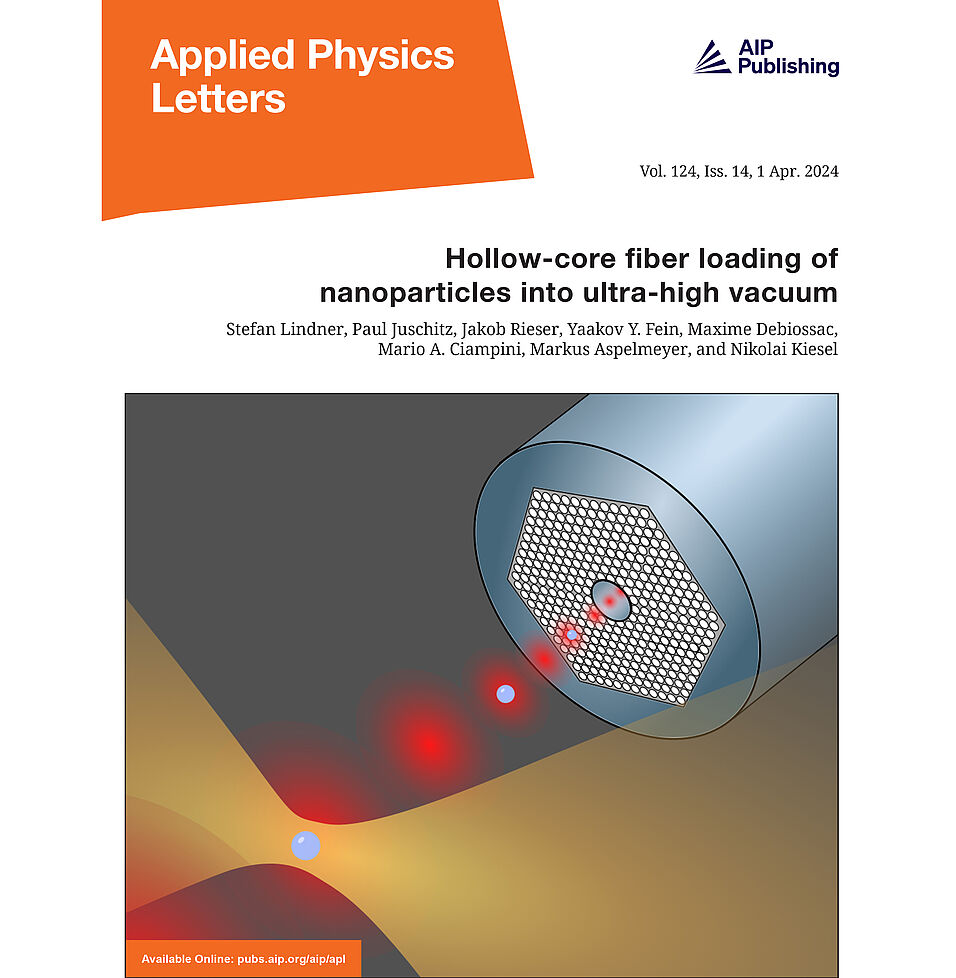We transport silica nanoparticles in the range of 100-755 nm diameter within a hollow-core photonic crystal fiber (HCF) using an optical conveyor belt, which can be precisely positioned with respect to a target optical trap. The trap is a 1550nm standing wave in a Sagnac configuration with approximately 1W input power and a pair of 0.6 NA aspheric lenses near the center of the Sagnac to achieve both a tight trap focus and a large collection efficiency for readout. The optical conveyor belt used for transporting the particles inside the HCF is a moving optical standing wave formed by two 1.5 W counter-propagating 1064 nm beams, where one beam is coupled into the high-pressure side of the HCF and the other into the UHV side. Each beam is frequency controlled, which allows one to set a relative detuning ∆ and thereby create a moving standing wave with velocity v = λ∆/2. Silica particles are loaded into the optical conveyor belt via an ultrasonic nebulizer and are transported one by one from the low-vacuum loading chamber into the UHV science chamber. The fiber core diameter of 9μm and the fiber length of 1.4 m enable pressure differentials between the chambers of up to 12 orders of magnitude. After transport, the nanoparticles are directly deposited into the standing-wave trap in the science chamber via an active trigger mechanism which enables capture of the particle in the target trap down to 2e-9 mbar. We also demonstrate loading of multiple particles at different lattice sites by re-positioning the HCF tip after each loading cycle. A complete handover from start (particle trapped in conveyor belt) to end (particle in the target trap at UHV) takes less than three minutes under manual control. We expect that automation could reduce the loading time to a few seconds. Our work opens the path for increasing nanoparticle numbers in the study of multiparticle dynamics and high turn-around times for exploiting the quantum regime of levitated solids in ultra-high vacuum.
Publication in Applied Physics Letters:
Stefan Lindner, Paul Juschitz, Jakob Rieser, Yaakov Y. Fein, Maxime Debiossac, Mario A. Ciampini, Markus Aspelmeyer, Nikolai Kiesel
“Hollow-core fiber loading of nanoparticles into ultra-high vacuum”
DOI: 10.1063/5.0190658
> Video of nanoparticle loading

